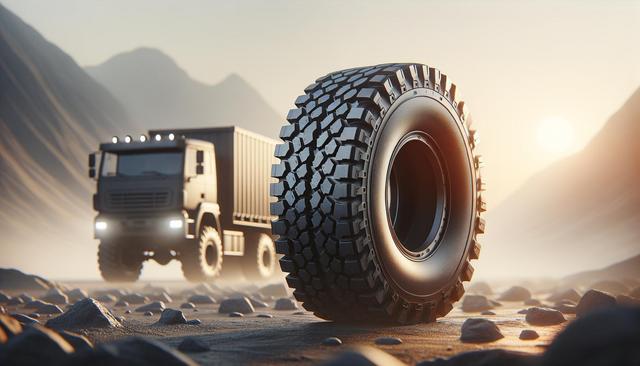Understanding the Purpose of Off-Road Tires
Off-road tires are specifically engineered to handle challenging environments that standard highway tires cannot. These include rough trails, mud, snow, and rocky surfaces. Unlike regular tires, off-road models feature aggressive tread patterns, reinforced sidewalls, and larger tread blocks. These design elements help improve traction, reduce the risk of punctures, and maintain stability on uneven ground. Truck owners who frequently drive in remote or rugged areas often find off-road tires to be a worthwhile investment.
One of the key characteristics of off-road tires is their ability to maintain grip in low-traction conditions. Whether it’s climbing over boulders or navigating through deep mud, the tires’ deep grooves and self-cleaning capabilities make a significant difference in performance. Additionally, their construction is typically more durable, using tougher rubber compounds that resist wear and damage from sharp objects.
Types of Off-Road Tires for Different Needs
Choosing the right off-road tire depends on the type of terrain you plan to tackle most often. Not all off-road tires are the same, and understanding the differences can help you make an informed decision. Here are the main categories:
- All-Terrain Tires: Versatile and suitable for both on-road and light off-road use. They offer a balanced performance and are ideal for those who split time between highways and trails.
- Mud-Terrain Tires: Designed for deep mud, loose dirt, and other extreme off-road conditions. They feature large, aggressive tread blocks and wide voids to clear debris.
- Rock-Crawling Tires: Built with extra-strong sidewalls and unique tread patterns to grip onto rocky surfaces and minimize slippage.
- Sand Tires: Specially designed with paddle-like treads to glide over soft sand without sinking.
Each type has its advantages and trade-offs. For example, mud-terrain tires may be noisier and less fuel-efficient on paved roads, while all-terrain tires offer a quieter ride but may not perform as well in deep off-road conditions.
Factors to Consider When Buying Off-Road Tires
When shopping for off-road tires for your truck, it’s important to look beyond just the tread pattern. Several other factors will influence performance and longevity:
- Tire Size: Larger tires offer more ground clearance, which is useful for navigating obstacles. However, they may require modifications to your truck’s suspension or wheel wells.
- Load Rating: Make sure the tires can support the weight of your truck, especially if you often haul heavy loads.
- Sidewall Strength: Off-road conditions can be harsh, and reinforced sidewalls help prevent punctures and abrasions.
- Tread Life: Consider how long the tires are expected to last under your typical driving conditions. Some off-road tires wear quickly if used frequently on asphalt.
Price is another consideration. While you don’t necessarily need the most expensive option, it’s important to invest in quality tires from reputable manufacturers that are well-regarded for durability and performance.
Maintaining Off-Road Tires for Optimal Performance
Proper maintenance is key to getting the most out of your off-road tires. Since these tires are subjected to tough conditions, regular checks and care can extend their life and ensure safety. Here are some maintenance practices to follow:
- Regular Inspections: Check for cuts, punctures, or uneven wear. Addressing issues early can prevent more serious problems on the trail.
- Rotate Tires: Rotate your tires according to the manufacturer’s recommendations to ensure even wear across all four wheels.
- Adjust Tire Pressure: Off-road driving often requires different tire pressures. Lowering the pressure can improve traction in sand or mud, while higher pressure is better for highway driving.
- Clean After Use: Remove mud, rocks, and debris from the treads to prevent damage and maintain performance.
Additionally, storing your truck properly when not in use—preferably in a garage or under a cover—can protect the tires from UV damage and temperature fluctuations.
When to Replace Your Off-Road Tires
Knowing when to replace your off-road tires is just as important as selecting the right type. Signs of wear and tear can compromise safety and performance. Here’s what to watch out for:
- Worn Tread: Use a tread depth gauge to ensure the tread is still within safe limits. Most off-road tires should be replaced when the tread depth reaches 4/32 of an inch or less.
- Cracks and Dry Rot: Exposure to the elements can cause rubber to dry out and crack, especially if the tires are old.
- Performance Decline: If you notice slipping, reduced traction, or increased road noise, it may be time for new tires.
- Age: Even if the tread looks fine, tires older than six years may need replacing due to rubber degradation.
Replacing worn-off-road tires promptly ensures your truck remains capable and safe on all terrains. It also helps avoid costly damage to your vehicle from poor traction or tire failure.







